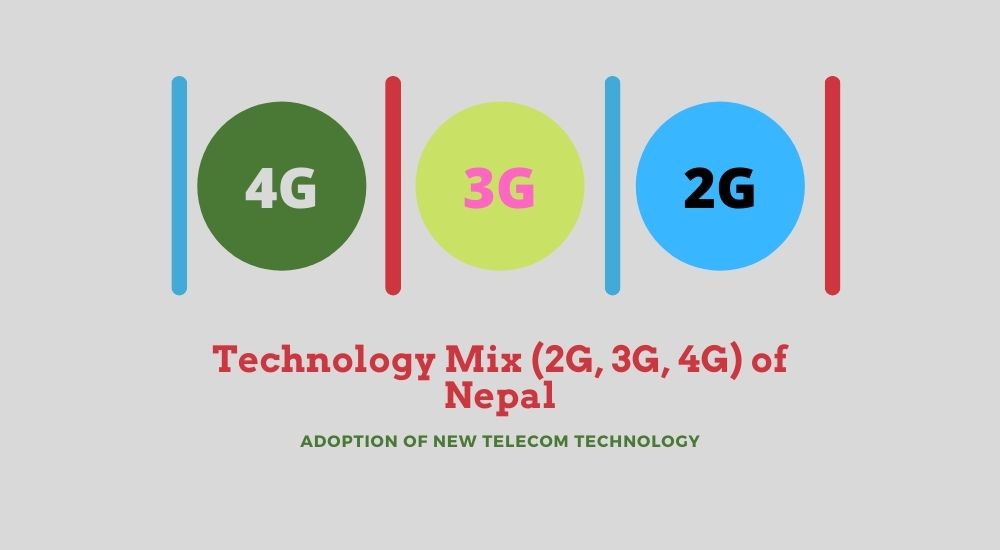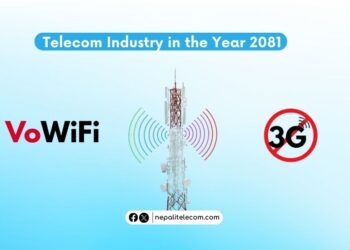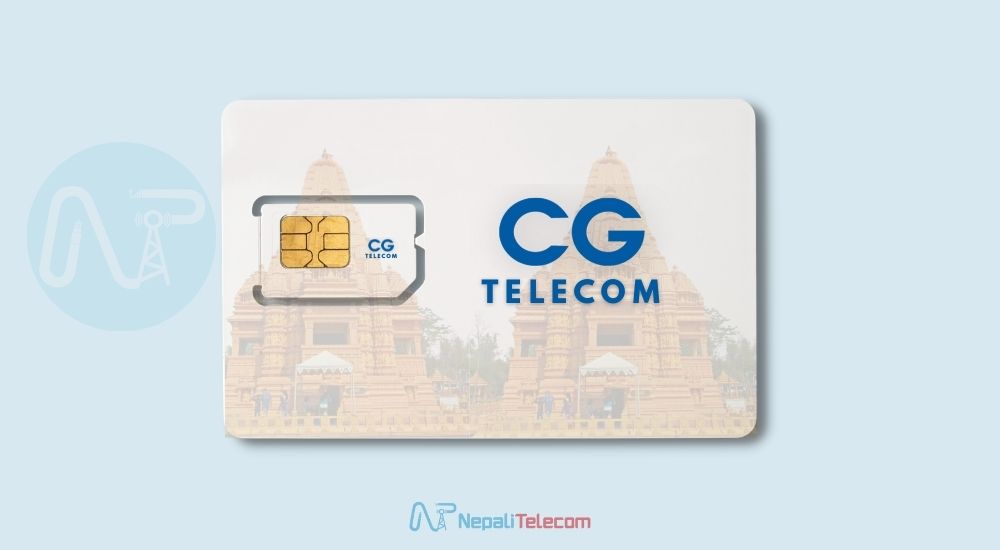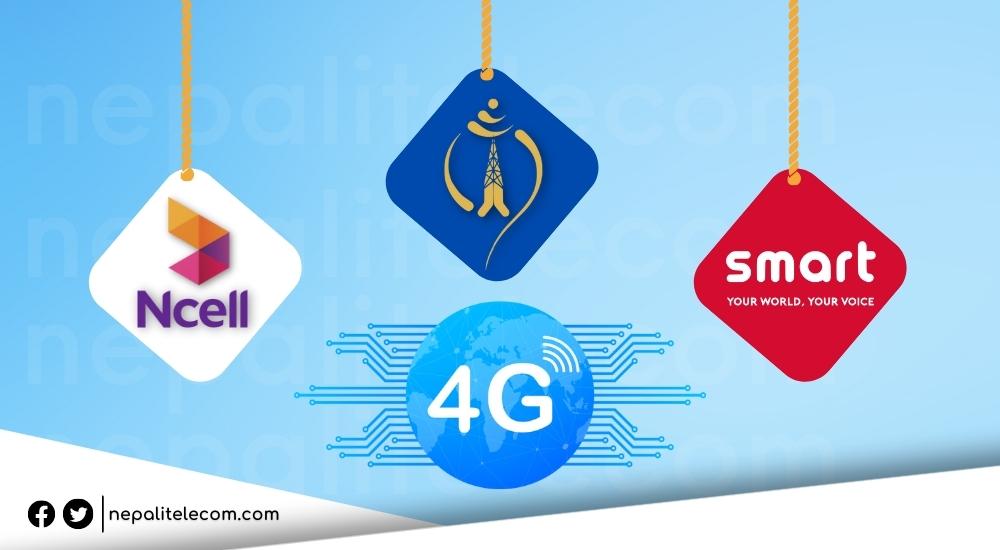When it comes to a mobile network, we have three technologies or networks to look for, namely 2G, 3G, 4G networks in Nepal. We have come a long way in these two decades, where we have reached a target to attain a nationwide or carpet 4G network. But the new technology like 4G is of no use if the subscribers do not adopt it. In this post, we are here to provide you the technology mix or adoption of multiple technologies (2G, 3G, 4G subscriber percentage) in Nepal.
Do checkout: Why do three mobile technologies (4G, 3G, 2G) co-exist?
Before going straight into Nepalese statistics, let’s discuss a few other countries or region’s technology mixes. As they already got a 5G network, the technology mix contains 2G, 3G, 4G, and 5G technologies. But in all regions, 5G subscription has not yet reached a significant level to count for now. In a matter of a few years, we will be having a handful of 5G subscription percentages worldwide.
Technology Mix of Some Regions
Starting from Asia, GSMA reports that there are 27% 2G, 25% 3G, and 48% 4G subscribers as of 2019. Similarly, for Europe, it’s 14%, 28%, and 58% share for 2G, 3G, and 4G subscribers.
If we have a look at the 2G, 3G, and 4G subscribers percentage in North America, we find it to be 6%, 12%, and 82%. Then for Greater China, it is 13%, 5%, and 83% respectively for 2G, 3G, and 4G. With this data, we can say China has the largest 4G subscriber base.
Then, if we have a look at the African Sub-saharan region, then the 2G, 3G, 4G technology mix is around 45%, 46%, and 10% respectively. This data shows the lowest 4G adoption in the world.
4G 3G 2G Subscription in Nepal
Now let’s come to Nepal to analyze the adoption of different mobile technologies. For this, we have taken the latest MIS data in September. There are around 35 million GSM subscribers in Nepal from three telecom operators. Out of which, 5.5 million are for 4G, 11 million are for 3G, and the remaining 18.5 million are of course for 2G only. The data shows that there are around 53% users in the 2G network, 31% percent in the 3G network, and 16% in the 4G network.
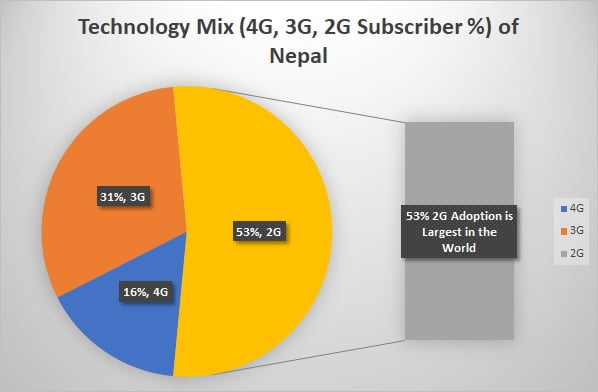
Nepal’s current technology mix for 2G, 3G, 4G networks is subpar as that of Asia pacific’s telecom market, in terms of new technology adoption. To be honest, it is near to the African region subscription. Though the 4G percentage is higher by 5%, 2G subscription of 53% should be the highest in the world.
As per Telecom operators, the 4G network coverage has reached more local levels (73% in Ncell and 80% in Ntc). That means the 4G network has become widespread in Nepal. Still, they have to work a lot to provide 4G coverage in more areas.
They are investing a lot in the 4G network expansion, the adoption rate is not satisfactory at all. Even if the 4G network has reached nearly 50% of areas, the 4G subscription of just 15% should be a big worry for the whole telecom industry.
Do checkout: Nepal Telecom recommends 4G bands, Mode for maximum benefit and good quality.
Reason for low 4G adoption in Nepal
We found the following reasons for such low adoption of 4G in Nepal, as per our analysis.
- 4G taking long to reach all areas: As the telecom operators are still working to expand 4G to all places of the country, people in the remote, outskirt areas are deprived of adopting 4G.
- The popularity of Feature phone handsets: Feature Phones are still popular in Nepal which is also sufficient for their voice service.
- People’s Awareness of New technology: Though people having 4G compatible handsets lie in 4G available areas, they are still with older technology due to less awareness. Some people also have a firm belief that they should not have a 4G or even 5G network when not even a 2G network is available.
- Not much-differentiating services from 4G: 4G has also not been able to grab the attention of people with new innovative services rather than just increasing the data speed.
- People’s Lethargy for changing the SIM card. Some of the old SIM cards (huge quantity in numbers) require replacing their SIM card to get 4G service. But people hesitate to visit the customer center for just the SIM change.
Having discussed the reasons for low 4G adoption, Nepal is known to be preparing for a 5G network. The regulator NTA has already recommended some 5G spectrum, first for testing and then for commercial use. As we have not got a good taste of the 4G network, it is still early for now to have a 5G network in Nepal but being ready for the next generation network is a good thing.
Tell us what do you think of the technology mix in Nepal for 4G, 3G, 2G subscriptions which indicates the adoption of newer technology? Do you use the 4G mobile network, please comment below?


